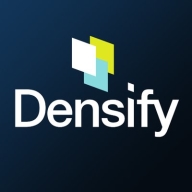


Densify and Carbonite Migrate are competing products in IT infrastructure optimization and migration. Densify appears to have the upper hand in optimizing cloud resources effectively, while Carbonite Migrate excels in seamless data migration with a comprehensive feature set.
Features: Densify includes automatic cloud instance optimization, detailed analytics, and AI-driven insights, enhancing resource allocation and efficiency. Carbonite Migrate provides real-time replication, high scalability, and platform versatility, focusing on smooth data migration across diverse environments.
Ease of Deployment and Customer Service: Densify’s deployment model is primarily cloud-based, allowing swift integration with various cloud platforms, paired with proactive customer support. Carbonite Migrate offers a SaaS model with robust migration tools, facilitating easy setup across various IT environments.
Pricing and ROI: Densify’s pricing is structured around cloud efficiency gains, offering attractive ROI through cost savings and complexity reduction. Carbonite Migrate’s pricing focuses on minimizing downtime and migration efficiency, providing significant ROI by enabling rapid transitions.


IBM Turbonomic offers automation, planning, and right-sizing recommendations to streamline resource management, improve efficiencies, and optimize costs across virtualized environments and cloud platforms.
IBM Turbonomic is valued for its capability to optimize resource allocation and monitor virtual environments efficiently. It facilitates automated decision-making in VM sizing, load balancing, and cost optimization for both on-premises and cloud deployments. Users can leverage insights for workload placement, ensure peak performance assurance, and effectively right-size across VMware and Azure. The ongoing transition to HTML5 aims to improve visual and navigational ease, while expanded reporting features are anticipated. Opportunities for improved training, documentation, and integrations enhance platform usability and functionality.
What Are the Key Features?In finance, IBM Turbonomic aids in maintaining platform efficiency during market fluctuations. Healthcare organizations leverage its capability for resource optimization during high-demand periods to enhance patient care support. Retailers use it for planning in peak seasons, ensuring resources align with fluctuating demand to maintain performance continuity.
Carbonite Migrate allows you to easily migrate physical, virtual and cloud workloads to and from any environment with minimal risk and near-zero downtime. Options for finely tuned automation help orchestrate every stage of the process.
Densify is a hybrid cloud and container resource management platform that makes workloads self-aware of their precise resource requirements and automates the resource management and selection process. This solution helps you control your cloud spend and also helps your apps perform and scale better. Densify enables you to match your cloud requirements with the optimal cloud supply. Additionally, Densify is the only technology that leverages patented, predictive machine learning-powered analytics to perform advanced modeling of workload patterns, and provide precise optimization directives. It is ideal for cloud engineers, container platform owners, and IT finance.
Densify works by:
Densify Features
Densify has many valuable key features. Some of the most useful ones include:
Densify Benefits
There are many benefits to implementing Densify. Some of the biggest advantages the solution offers include:
We monitor all Cloud Migration reviews to prevent fraudulent reviews and keep review quality high. We do not post reviews by company employees or direct competitors. We validate each review for authenticity via cross-reference with LinkedIn, and personal follow-up with the reviewer when necessary.